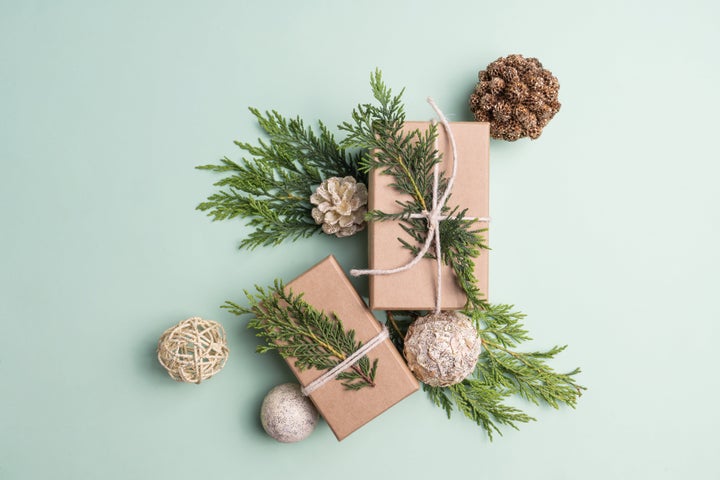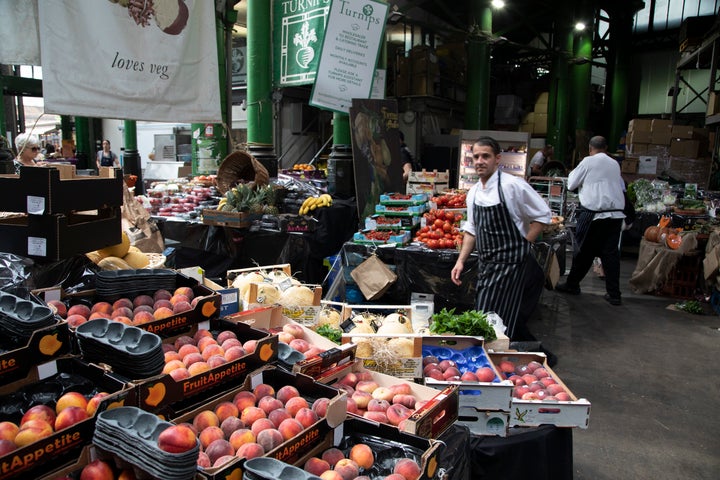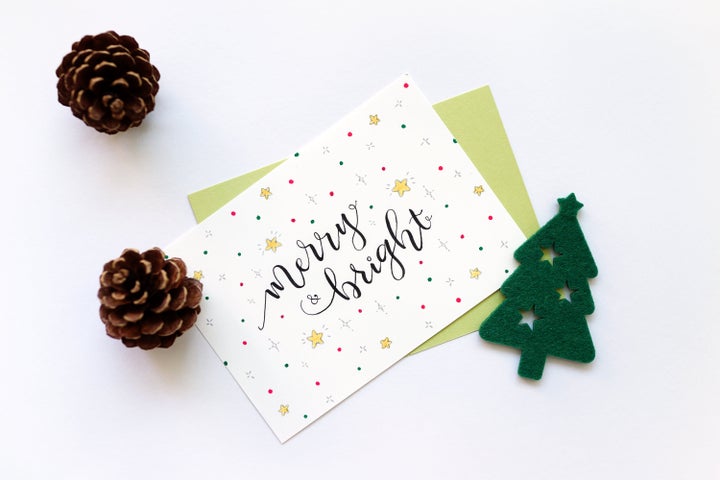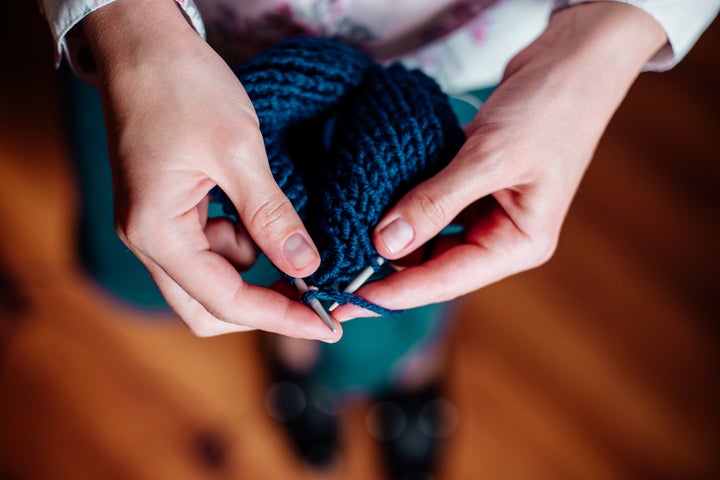
Christmas brings many people a lot of joy, but it also brings a lot of waste – from leftover food piled high in your fridge to bin bags full of non-recyclable wrap.
Thankfully, you don’t have to turn your life upside down in order to have a greener season. Small actions can have a big impact, especially if done en masse.
1. Shop local
Hit nearby markets to see what goodies you can buy – supporting local businesses is a great way to give your hometown a boost (and you’re likely to get a more unique gift, too).
If your town doesn’t have great shopping options, try buying fair trade or eco-friendly gifts online, or secondhand (and sometimes vintage) gifts from charity shops. If you do shop online, try and resist next-day delivery slots – these force companies to send out trucks which aren’t at full capacity.

2. Use recyclable wrapping paper
Paper with glitter, metallic designs or a shiny texture are usually non-recyclable. Your best bet is to buy plain brown paper wrap and some ribbons, which can then be reused by your recipient.
A good way of testing if paper is recyclable is scrunching it – if it opens up again, it probably can’t be recycled.

3. Ditch the Christmas cards
Cards are nice to receive, but they’re not that great for the planet – especially as many of them come covered in glitter.
If you’re a staunch Christmas card sender, here’s our pick of some cards you can actually recycle – or you could send e-cards online for free.

4. Make your own Christmas decorations
Dried oranges are easy to make. Cut an orange into thick slices and pat them to dry. Put them into a warm oven (120°C) for about three hours, turning them every half an hour. When they’re done, poke a hole through the top and thread a colourful ribbon (or some string) through. Voila!

5. Be a better traveller
One key way you can reduce your carbon footprint this year is by travelling less, which many people are doing during the coronavirus pandemic anyway.

6. Make your own gifts
Whether it’s a framed drawing, sloe gin, homemade jam or a knitted scarf, let your creative juices flow and make something with love, rather than buying plastic tat.

7. Eat less meat
From the hot pork baps on Christmas Eve, to the salmon and egg muffins on Christmas morning, plus the turkey and pigs in blankets for lunch – the whole day can be a right meat fest. Research suggests a traditional turkey Christmas dinner has more than double the greenhouse gas emissions than a vegan nut roast with plant-based trimmings.
If you want to stick to the turkey tradition, why not give your breakfast and other festive meals a veggie upgrade, instead? Every little helps.

8. Reduce your food waste
When embarking on your big Christmas food shop, make a list and limit yourself to only buying the things you need – rather than getting 15 variations of mince pies and enough cheese to feed the whole street.
Environmental charity Hubbub estimated in 2018 that across the UK, two million turkeys and 74 million mince pies would be binned after Christmas. If you do buy too much, keep the leftovers and make meals out of them in the week leading up to New Year’s Eve. Or, donate any non-perishables you won’t end up eating to your local food bank. Don’t let it go to waste.
9. Choose your tree wisely
Traditional, cut Christmas trees don’t have a huge negative impact on the environment when grown by a local dealer, without the need for hefty transport. However, recycling accessibility varies greatly and around seven million trees are thought to end up in landfill each year.
Look into renting a Christmas tree – if you haven’t got one already – or buy a potted tree rather than a cut one, which you can then keep outside and reuse for several years.
10. Don’t buy a new Christmas jumper
We’re set to buy 12 million new Christmas jumpers this year, according to environmental charity Hubbub, yet we’ve already collectively got 65 million stashed away in our wardrobes from previous years.
If you don’t have a festive jumper already, why not head to a charity shop to buy something preloved instead (and while you’re at it, donate some jumpers that you no longer wear)?
Hubbub is warning of a new threat posed by Christmas jumpers due to their high plastic content. Research looking at 108 jumpers from 11 different high street and online retailers found that 95% were made wholly or partly of plastic materials. The most common plastic fibre used is acrylic, which was found in three quarters of the jumpers tested. A study by Plymouth University found that acrylic was responsible for releasing nearly 730,000 microfibres per wash.